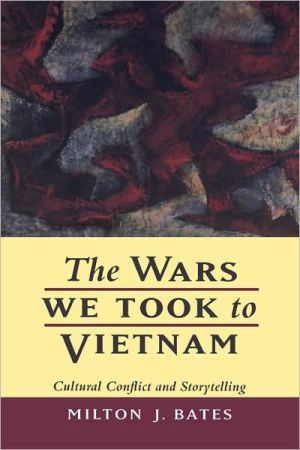

 |

|

The average rating for The Wars We Took to Vietnam: Cultural Conflict and Storytelling based on 2 reviews is 3 stars.
Review # 1 was written on 2009-08-12 00:00:00 Alain Brun Alain BrunWar is a product of human culture, imbued with its values, contradictions, and conflicts. American culture n the 1960s was beset by domestic schisms even as the country fought a war in Southeast Asia. What we call the Vietnam War thus embraced not only the conflict with North Vietnam but also the war between those who held different visions of American territorial expansion; between black and white Americans; between the younger generation and the older. |
Review # 2 was written on 2016-03-29 00:00:00 Brian Reardon Brian ReardonLouis Owens makes a fairly straightforward argument about Native American literature and what common themes and concerns it may have. He says, "The recovering or rearticulation of an identity, a process dependent upon a rediscovered sense of place as well as community, becomes in the face of such obstacles a truly enormous undertaking. This attempt is at the center of American Indian fiction" (5). Furthermore, he argues, "One of the requisites for a Native American literature, Dorris suggested [in 1979], was a reflection of 'a shared consciousness, an inherently identifiable world-view.' More than a decade later, it seems that there is indeed such a thing as Native American literature, and I would argue that it is found most clearly in novels written by Native Americans about the Native American experience. For, in spite of the fact that Indian authors write from very diverse tribal and cultural backgrounds, there is to a remarkable degree a shared consciousness and identifiable worldview reflected in novels by American Indian authors, a consciousness and worldview defined primarily by a quest for identity: What does it mean to be 'Indian''or mixedblood'in contemporary America?" (20). To support his argument, he analyzes texts by John Rollin Ridge and Mourning Dove, John Joseph Mathews and D'Arcy McNickle, N. Scott Momaday, Leslie Marmon Silko, Louise Erdrich and Michael Dorris, and Gerald Vizenor, tracing the shifts in the perception and representation of mixedbloods in particular, tracing the ways in which Native American literature has opened up ever greater possibilities for seeing the mixedblood as a site of possibility rather than merely a source of tragedy. |
CAN'T FIND WHAT YOU'RE LOOKING FOR? CLICK HERE!!!